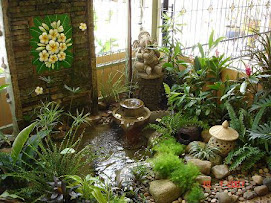A Bridal Flowering of your Own
Author: Krissy Lanni
Weddings; the day many women dream about since the time they are little girls. Location, setting, decorations, colors, the wedding and bridal dresses, flowers, tuxedos and of course the bridal bouquet; weddings are the day dreams are meant to come true. After the date, one of the biggest, and usually the next decision to be made, is the wedding location and setting. Once this decision is made, the formidable task of looking at the tremendous amount of accessory alternatives available can begin. Matching the accessories with the setting is a remembrance all present will remember. Bridal bouquets are no exception. Selecting the proper mixture of flowers that will create and become the bridal bouquet can be matched in gorgeous and stunning ways to compliment not only the bride, but the wedding setting choice as well.
Since the setting has been chosen, when choosing the bridal bouquet, the colors, shapes and textures can be considered accordingly. Not only all the flowers, but the bridal bouquet in particular, has tremendous meaning and importance in a wedding. It not only is an extremely personal accessory to the bride but is something that will be captured in the vast majority of the wedding pictures. Additionally, in many traditions and wedding reception settings, bridal bouquets are "thrown over the brides shoulder" to some lucky single woman; signifying upon her lucky catch of the bridal bouquet, she is next in line to stand at the altar and become married.
Let's look at a few tips and variations of flowers composing bridal bouquets in different types of wedding settings:
Modern Setting Bridal Bouquet Ideas: Selected, assorted mixture of: prince garden roses, black beauty roses, some sort of dark flower, such as chocolate cosmos, mixed with zinnias, ash berries and perhaps some type of geraniums, such as peppermint.
Elegant Setting Bridal Bouquet Ideas: Selected, assorted mixture of: garden roses, miniature calla lilies, gomphrena, zinnias, baby tears, gloriosa lilies, hydrangeas, nerine lilies, bittersweet, cymbidium orchids and perhaps acorns.
Including rhinestone crystals in any bridal bouquet will make it more elegant.
Urban/Downtown Bridal Bouquet Ideas: Ask the floral designer for unusual blooms, bold shapes and graphic, embellished ribbons.
Garden Setting Bridal Bouquet Ideas: Selected, assorted mixture of: cabiosa, lace-cap hydrangeas, nerine lilies, snowberries and classic soft colored roses, viburnum, berries, belladonna and amaryliss are ideal for garden wedding settings. Ask the floral designer for lush and romantic, loose bouquets in soft pastel colors that are natural and feminine. This is an ideal bridal bouquet for a couple that is marrying among the greenery of a garden or outside area.
Uptown/Residential Setting District Bridal Bouquet Ideas: Selected, assorted mixture of: monochromatic clusters or blooms with strong colors arranged tightly. What this does is create striking bouquets, ideal for this type of setting.
Beach Setting Bridal Bouquet Ideas: If you are marrying by the sea, pick a free-flowing, whimsical design with a mix of textures in flowers and grasses.
Other Setting Bridal Bouquet Ideas: Other popular flowers often found in bouquets are: tweedia, nigella and dusty miller, colored roses, oregano, wild grasses and seed pods.
The bridal bouquet is the most important accessory a bride carries. She has to feel comfortable and beautiful carrying the bouquet. It is the finishing touch, like wearing a diamond necklace to complete the look of a gown. It is therefore critical and important that the bouquet is designed to accentuate the bride as well as to bring out her personality on one of the most important days of her life.
Article Source: http://www.articlesbase.com


